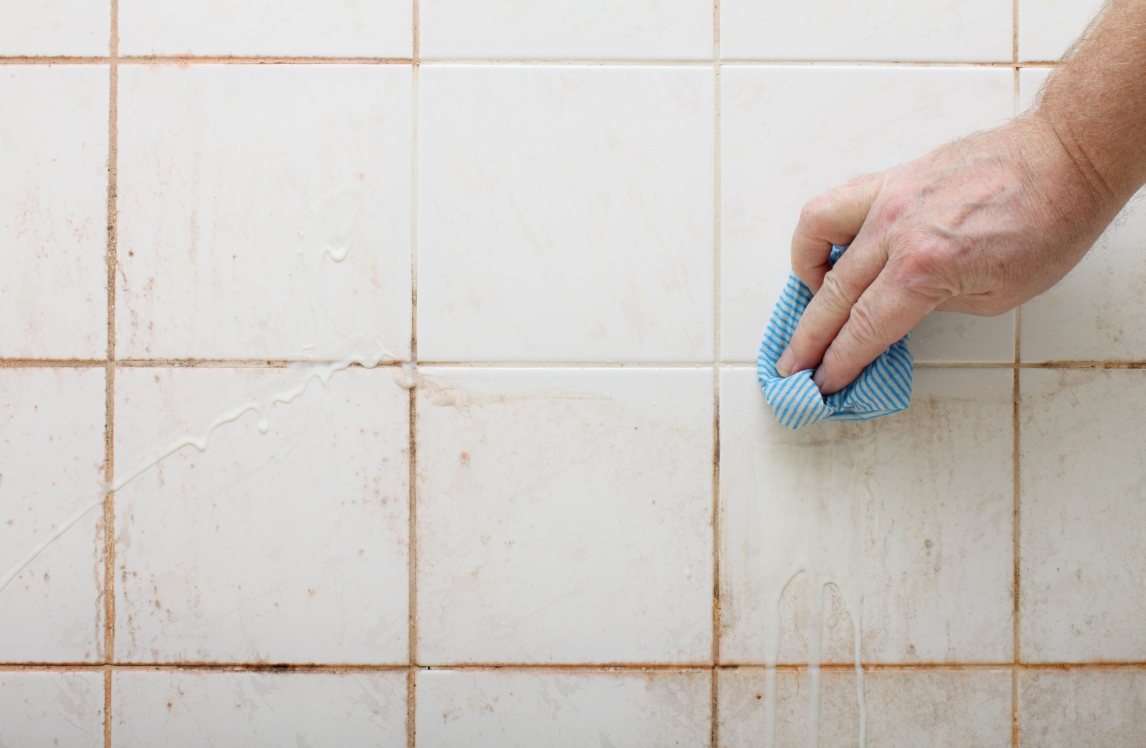Mould in the home doesn’t just look awful; it can also be a serious health hazard. Black mould, in particular, is a nasty addition to any home, and people living with it are more likely to suffer from respiratory illnesses, infections, allergies or asthma. The very old and the very young are most susceptible, but anybody living for extended periods around mould is taking their health into their own hands.
This guide will walk you through identifying, preventing, and removing mould, ensuring a healthier living environment - which looks considerably more inviting.
1. Identifying and Tackling Common Mould Sources
Mould thrives in wet and moist environments, so addressing common sources like leaky roofs, damp basements, and poor ventilation is crucial. Mould occurs all the time, but dealing with it quickly and efficiently before it can cause any significant harm is in everybody’s best interest.
However, with the discovery of drug-resistant mould that can spread rapidly to humans, leading to a lung disease known as Aspergillosis, which affects 10-20 million people worldwide - it’s more important than ever to act fast.
Here are some telltale signs that you have mould in your home:
- Steamed-up windows and puddles of water on the window sills
- Walls that are damp to the touch
- Peeling or flaking wallpaper
- Black spots of mould on walls and ceilings – often prevalent in bathrooms
- A musty smell
Addressing Condensation Issues
Condensation, often seen on bathroom mirrors and windows, arises from daily activities like cooking and bathing. This moisture can contribute to mould growth if not properly managed. Here are a few points to help deal with condensation issues.
- Opening a window
- Using an extractor fan
- Avoid drying clothes inside for long periods
- Take shorter showers
- Cover pans while cooking
Dealing with Leaking Roofs and Pipes
Leaks in roofs and plumbing can lead to persistent dampness, encouraging mould. Telltale signs include water stains or peeling paint on ceilings and walls. These need to be looked at immediately because when a leak starts, it’ll rarely stop on its own.
Managing Damp Basements and Crawl Spaces
Basements and crawl spaces often suffer from poor ventilation, leading to damp conditions perfect for mould. Signs include a musty smell or visible mould growth. If you have a window in the vicinity, open it up to help with the condensation, otherwise, consider using a fan to increase airflow through the area.
2. Effective Cleaning Techniques for Mould Removal
Correct cleaning methods are vital for effectively removing mould and preventing its return. As we mentioned earlier, mould can cause havoc on human lungs. Mould spores can easily attach to our respiratory passages and lungs, leading to serious long-term health problems. Black mould has become a perennial problem in many Irish homes, but it can sometimes take months or even years until you realise the extent of the problem.
Using Vinegar and Baking Soda
A safer alternative to harsh chemicals, vinegar and baking soda can effectively remove mould from surfaces like bathroom tiles. Here’s how to do it:
- Mix two parts baking soda with one part white vinegar and one part water
- Stir the mixture well until it becomes a thick paste
- Spread your mixture onto the surface and let it dry. Don’t be shy here; lather it on
- Scrub away the black mould and stains, then wipe down the surface with water
Employing Commercial Mould Cleaners
For tougher mould, commercial cleaners might be necessary. Always follow instructions to ensure safe and effective use.
The Power Of Bleach
Bleach is potent against mould but should be used cautiously and in well-ventilated areas. Bleach can be just as dangerous for humans, so use it with care.
3. Regulating Humidity Levels to Control Mould
Controlling indoor humidity is crucial to mould prevention. While we never really think about the humidity levels in our homes - especially in Ireland. To help control humidity, you can use a combination of dehumidifiers and simply good airflow through affected parts of the house.
Installing Dehumidifiers
Dehumidifiers can significantly reduce moisture, especially in naturally damp areas like basements. These days, they’re relatively inexpensive, making them a great option in your home. How long you have it on really depends on the level of dampness. A house with a severe issue may require a week or more of continuous use, but once the situation is under control, just a few hours a day is enough.
Proper Ventilation in Bathrooms and Kitchens
Kitchens and bathrooms need adequate ventilation to expel moist air. Exhaust fans are a standard solution, but opening a window when cooking or running hot water in the bathroom is normally fine to keep condensation levels down.
Monitoring and Maintaining Ideal Humidity Levels
Maintaining humidity levels between 30-50% can help prevent mould growth. Hygrometers can monitor these levels, but your home should be fine if you’re below 50%. Anything above 60%, and you’re asking for trouble.
4. Enhancing Ventilation to Prevent Mould Buildup
Proper ventilation is crucial in preventing mould. We know that Ireland isn’t exactly blessed with the best weather, and it can be tempting to keep those windows and doors firmly shut during the cold months, but this is creating a breeding ground for mould to grow and thrive.
Proper Ventilation Strategies for Various Rooms
Different rooms require different ventilation strategies - often depending on the amount of condensation present - but an open window for a few hours a day can usually do the trick.
Using Exhaust Fans
Exhaust fans in kitchens and bathrooms help keep the air dry and reduce the chance of mould growth. These are two areas of the house that need special attention because of the temperature fluctuation and condensation levels.
Cross-Ventilation Techniques
Opening windows across the house can create cross-ventilation, reducing humidity and preventing mould. This can be a good idea when you need to go out for a few hours. Simply crack open the windows on the top floor and allow all healthy 02 to circulate through your home.
5. Regular Maintenance of Gutters and Plumbing
Regular maintenance can prevent many mould issues, and this is particularly true for your gutters and plumbing. Remember that this might not be your job, and whoever owns the house should be doing the maintenance.
Student housing has traditionally always been a little rough around the edges, but an increasing number of horror stories involving mould, particularly in Dublin, appears to suggest the situation is worsening and many landlords are not taking their legal and ethical responsibilities seriously.
If you don’t believe your rental property is up to scratch, formally ask your landlord to make improvements (and save the correspondence). Should they decline your request, contact Citizens Advice, and they’ll be able to help you through the next steps.
Cleaning and Inspecting Gutters
Clogged gutters can lead to water buildup and seepage. Regular cleaning and inspection are vital to prevent the spread of mould and general safety. Clogged gutters can put a considerable strain on a home, and when something bursts, mould's going to be the least of your concerns.
Preventing Pipe Leaks and Breaks
Periodically checking pipes for leaks or weaknesses can prevent major mould problems. The good times to do this are before and after winter when Irish pipers are under the biggest strain. Regular checks can identify potential issues early, preventing extensive damage and mould growth.
6. Sealing Cracks and Gaps in Walls and Windows
Sealing your home correctly is another key step in mould prevention. If you always see a lot of condensation around the windows, it could be a case of a leak somewhere that is allowing in excess moisture from outside.
Identifying and Sealing Wall Cracks
Sealing cracks in walls prevents moisture ingress. Pay special attention to corners and seams. Newer homes shouldn’t really have this problem, but this is undoubtedly an issue for older Irish homes. Here’s a quick guide for identifying and sealing wall cracks:
- Identify the type and severity of the crack before proceeding with repairs
- Clean the crack first and remove loose debris or old filler material still inside
- Choose the appropriate wall crack filler or crack seal for walls based on the type of crack and severity
- Apply the filler or sealant. Always follow the manufacturer’s instructions here
- Allow the repair to dry and cure properly before painting or applying a protective coating
Sealing Gaps Around Windows and Doors
Effective sealing around windows and doors can significantly reduce moisture penetration. If you think you’ve found gaps, some Polyfilla is usually enough to seal it back up.
7. Using Mould-Resistant Materials in Home Construction
This might not be under your control unless you’re building your own home, but choosing the right materials for renovations and additions can also prevent mould from ever becoming a problem. Retrofitting certain materials is also a good option.
Mould-Resistant Drywall
In areas prone to moisture, like bathrooms, mould-resistant drywall is a wise choice. This is because it’s been specially treated to resist mould growth and is made to withstand high humidity and low moisture levels.
Mould-Resistant Insulation
Certain insulation materials offer better resistance to mould than others. Mineral wool is by far the best in this regard. It’s resistant to water, so it doesn't get damp and provides good growing conditions for fungi, mould, mildew or other bacterial growth.
Mould-Resistant Paints and Coatings
Applying mould-resistant paints and coatings, especially in damp rooms, can be an effective preventative measure. This isn’t a miracle solution, but it will certainly keep you one step ahead.
8. Consider Professional Mould Remediation for Severe Cases
Sometimes, the mould problem is too big to handle alone, and simply battling it on a part-time basis just isn’t enough. If you're facing extensive mould growth, it's time to call in the professionals. Choose a service with the right certifications and qualifications to ensure effective and safe mould removal.
Enjoying Peace of Mind with 123.ie
123.ie offers comprehensive insurance coverage and support for mould-related issues, giving homeowners the assurance they need when dealing with this common problem. Whether you’re looking for a home insurance quote, preventative advice, or assistance in remediation, 123.ie is here to help.





